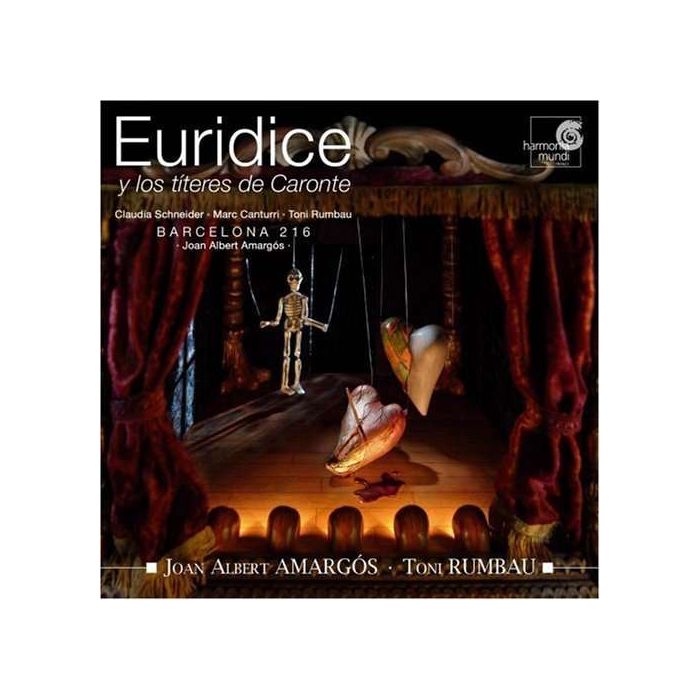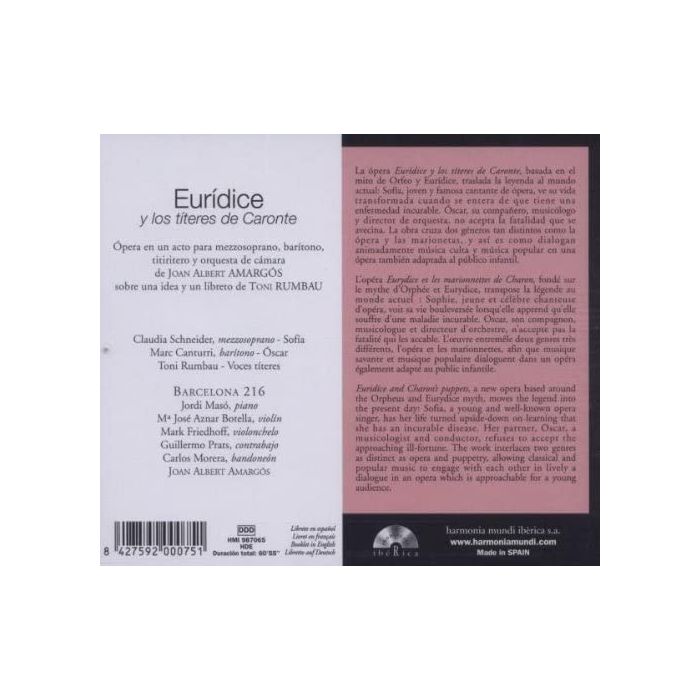
(Produkt nie został jeszcze oceniony)
kompozytor
Amargos, Joan Albert
tytuł
Amargos: Euridice y los titeres de Caronte
wykonawcy
Amargos, Joan Albert, Barcelona 216
nr katalogowy
HMI 987065
opis
Composer Joan Albert Amargós and puppeteer and author Roni Rumbau had an interesting idea - a combination of opera and puppet theater to create a new piece of contemporary music theater. The result was the phantasmagorical piece Eurydike and the Charon dolls, which after its world premiere in 2001 could be seen extremely successfully in places such as Madrid, Barcelona, Andorra, Lörrach, Ludwigshafen and Winterthur. It is about an opera singer named Sophie who learns that she is suffering from an incurable illness - in the middle of rehearsals for the opera Euridice by the baroque composer Jacopo Peri. Her friend Oscar is the conductor of the production; he only has the work in mind. A puppet theater appears on the street. Sophie is fascinated - especially by the Pulcinella character. Inexorably she is drawn into the world of dolls, in which there are no puppeteers other than death. Joan Albert Amargos has created a piece of music theater here that skilfully contrasts the elements of the ideal world of baroque opera with the supernatural modern sounds. The small ensemble, consisting of piano, violin, cello, double bass and bandoneon, is fascinating in its many colors. The bandoneon, for example, can equally create languid tango sounds or the impression of a baroque organ accompanying the recitative. The two protagonists Sophie and Oscar are sung by Claudia Schneider and Marc Canturri, two first-class Spanish soloists - a mezzo-soprano and a baritone, who harmonize well with their full, warm timbre. The two master the extraordinarily difficult, virtuoso parts, which also demand the last in terms of language design, as confidently as touching. The virtuosity with which Toni Rumbau screeches, squeals and speaks his distorted doll voices is also astonishing. The Barcelona 216 ensemble with the pianist Jordi Maso and the bandoneonist Carlos Morera, under the direction of the composer, is wide awake and plays the piece with an almost seething tension. This extraordinary musical theater production is also excellently documented with a four-language booklet and libretto. When you hear this powerful, imaginative production, you only regret one thing: that this is an audio CD and not a video DVD. •
Dr. Benjamin G. Cohrs [10/07/2005]
nośnik
CD x 1
wydawca
Harmonia Mundi
data wydania
21.09.2005
EAN / kod kreskowy
8427592000751
58,00 zł
Produkt dostępny.
Wysyłka w ciągu 3 dni roboczych
Darmowa wysyłka dla zamówień powyżej 300 zł!
Darmowy kurier dla zamówień powyżej 500 zł!
sprawdź koszty wysyłki
